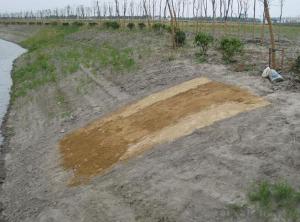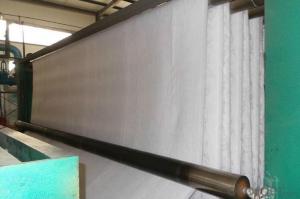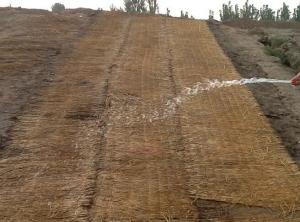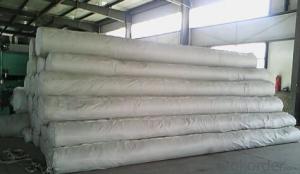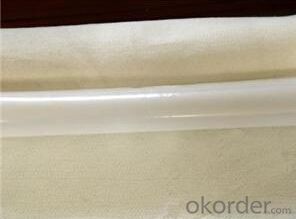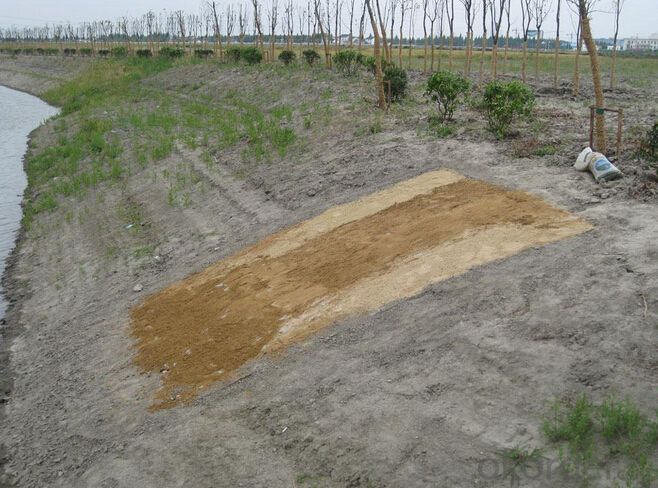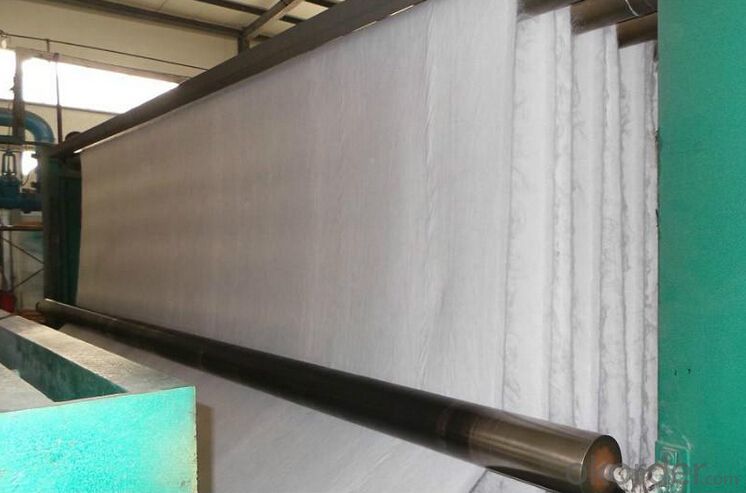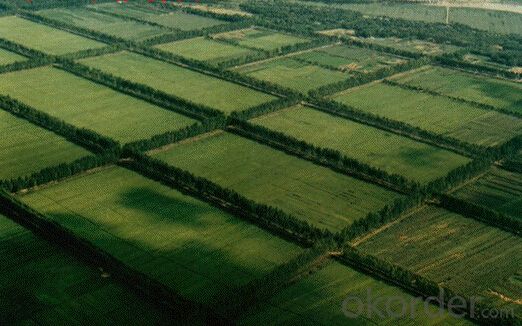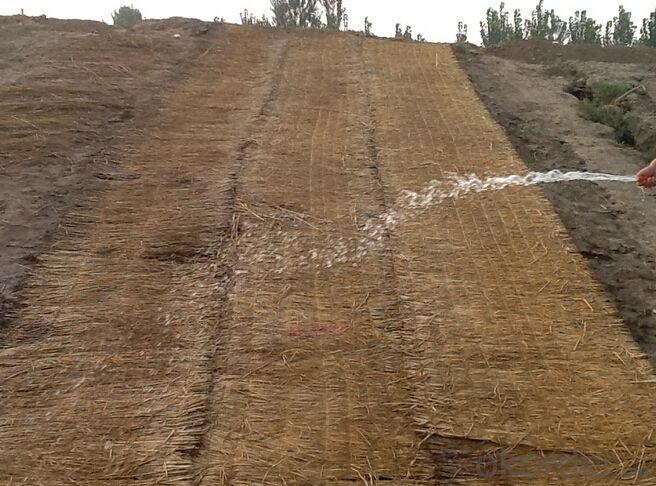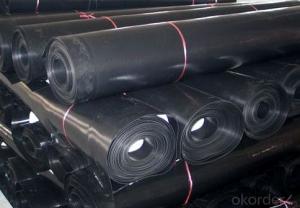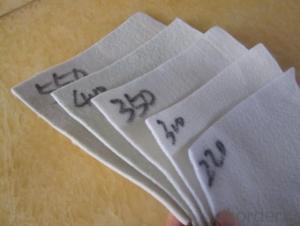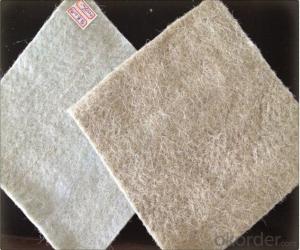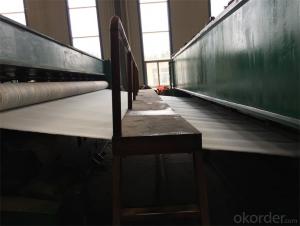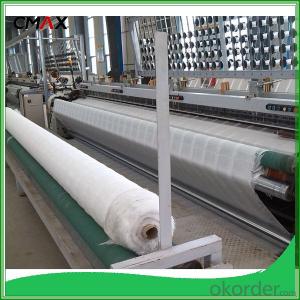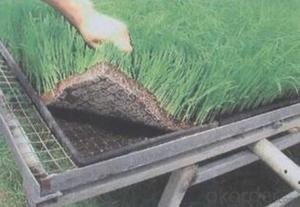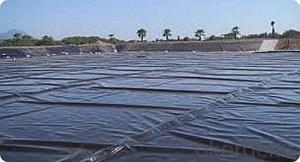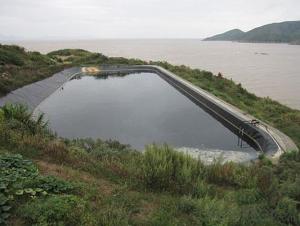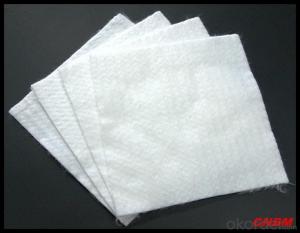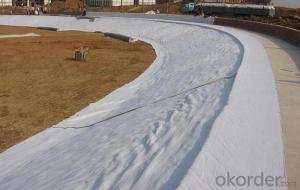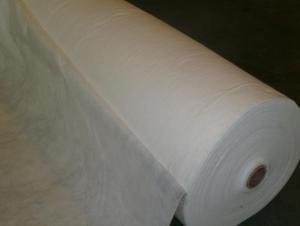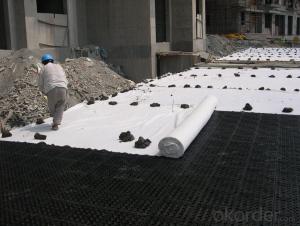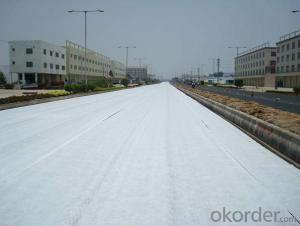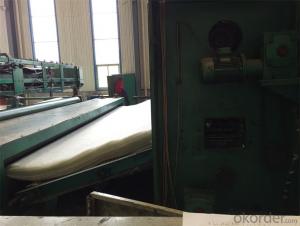High Strength Woven Geotextile - Nutrition Geotextile Geomembrane Factory Supply Direct
- Loading Port:
- Qingdao
- Payment Terms:
- TT OR LC
- Min Order Qty:
- 5000 m²
- Supply Capability:
- 2000000 m²/month
OKorder Service Pledge
OKorder Financial Service
You Might Also Like
Nutrition geotextile in water environmental engineering .
Specification:
Geotextile has excellent permeability, acquired, durability, which can be widely used in railway ,highway, movement hall,Dams,hydraulic structures hence hole, coastal shoal, reclamation,environmental protection and other projects. The main products are Synthetic staple fibers needle punched nonwoven geotextiles and split film yarn woven geotextiles.
Product Feature:
1. Simple and fast construction
2. Achieve the greening effect quickly after construction
3. Due to the grass and composite fiber fabrics become into one integration, so it has the ability of certain degree of flow resistance for the water rising before the grass survive.
4. Composite fiber fabric is a continuous structure from slope top to slope toe, both ends are fixed, has high water flow resistance.
Technical Specification
5.0 m length and 1.05 m width. Reverse side all used filter material. Grass seeds: Bermuda grass (warm season grass), Bahia grass (warm season grass), Kentucky bluegrass (cold season grass), Tall fescue grass (cold season grass), Red fescue grass (cold season grass). Plant height: 0.1 ~ 0.5 m.
| NO. | Items | Specification | Notes | |||
| 1 | Total unit area weight g/sq.m | ≥380 | ||||
| 2 | dimension | width m | 1.0~2.0 | |||
| length m | as per user’s request | |||||
| 3 | Composite fiber fabrics | Material | Polyester Fiber | High strength PET | ||
| Unit area weight g/sq.m | ≥160 | |||||
| Mesh dimension mm | 8×8 | |||||
| Extension strengh kn/m | ≥11 | MD & CD | ||||
| 4 | Filtra layer | Material | Polyester non woven geotextile | |||
| Unit area weight g/sq.m | ≥40 | |||||
| 5 | Grass seeds, Fertilizer | Type | According to actual situation choose 3~5 grass seeds | |||
| Plant height m | 0.1~0.3 | |||||
| 6 | Fiber layer | Material | wood pulp cellulose | |||
| Unit areaweight g/sq.m | ≥15 | |||||
| 7 | flow resistance | ≥4 | not allow appear scour, suction and blanket turn-over etc. damage phenomenon | |||
| M/s | ||||||
| 8 | Anti-UV strengh conservation rate % | 65~80 | 3000hrs Continuously exposure 3000hrs | |||
| 9 | Supporting spare parts | ABS fastening nail | Material | ABS Resin | Fixed between two blankets by length direction | |
| Fiber diameter mm | 35 | |||||
| Nail length mm | 325 | |||||
| Lnail | Material | Steel wire (content 10% zinc-aluminium alloy) | Used to fix single blanket | |||
| Fiber diameter mm | 4 | |||||
| Nail length mm | 200 | |||||
| ABS connecting nail | Material | ABS Resin | Used in the slope between the two blankets ( width direction) | |||
| Nail length mm | 38 | |||||
| Connecting fiber | Material | High strength Polypropylene | Used in the slope between the two blankets ( width direction) | |||
| Length mm | Cut as per request | |||||
APPLICATION:
Generally laid on the river channel, slope protection etc. slope revetment projects, to control the water erosion, soil loss, meantime can reach the effect of slope ecological restoration and landscape greening, making river back to natural.
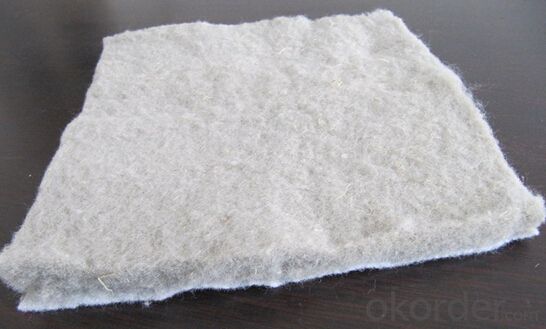
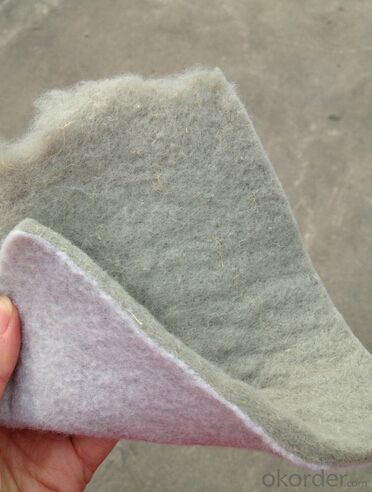
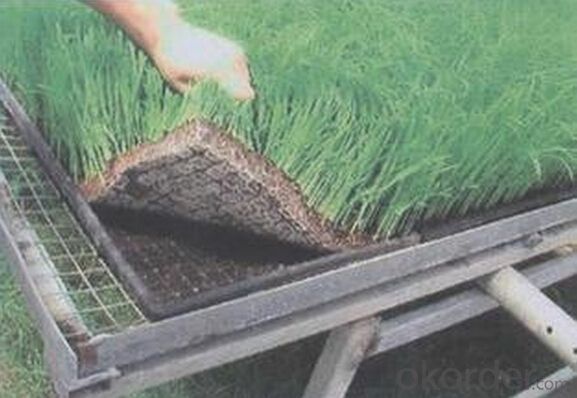

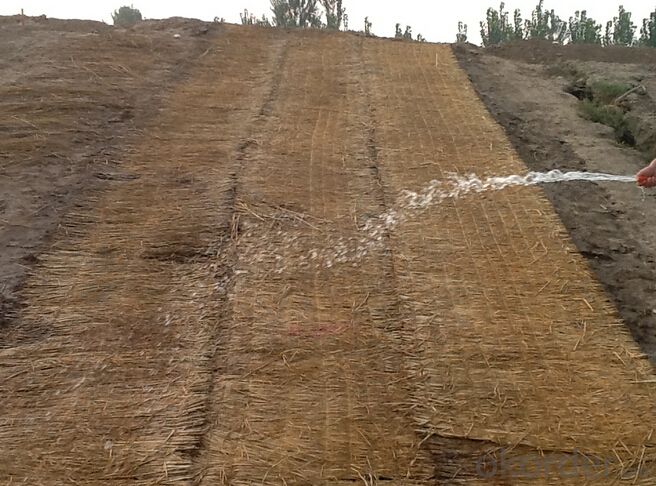
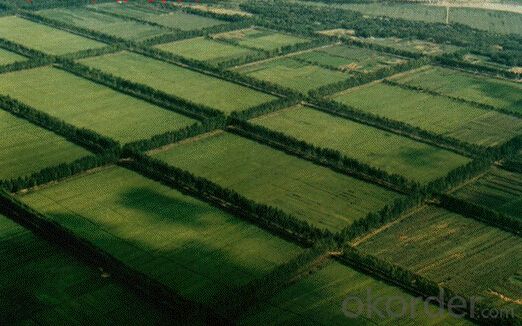
- Q: What is the geotextile of polypropylene gb / t?
- GB / T-2017 Geosynthetics Static Crack Test (CBR Method) This standard specifies the method of measuring the breaking strength of geosynthetics by flat top pressing bar. This method is usually carried out on samples that specify the standard atmospheric humidity. This standard applies to all types of geosynthetics, but does not apply to materials with a pore size greater than 10mm.
- Q: How do geotextiles aid in the reduction of liquefaction?
- Geotextiles aid in the reduction of liquefaction by acting as a barrier that prevents the migration of fine particles during the occurrence of liquefaction. This helps in maintaining the soil's stability and increasing its resistance to liquefaction-induced hazards.
- Q: How do geotextiles help with sediment control in water bodies?
- Geotextiles help with sediment control in water bodies by acting as a barrier that filters out sediment and other pollutants from entering the water. They are placed in strategic locations to prevent erosion and retain sediment, allowing cleaner water to pass through. Additionally, geotextiles promote vegetation growth, which further aids in sediment control by stabilizing the soil and reducing erosion.
- Q: What are the advantages of using geotextiles in shoreline stabilization projects?
- There are several advantages of using geotextiles in shoreline stabilization projects. Firstly, geotextiles provide effective erosion control by preventing the loss of sediments and soil particles from the shoreline. This helps to maintain the stability and integrity of the shoreline, reducing the risk of damage to nearby infrastructure and habitats. Secondly, geotextiles act as a filter, allowing water to pass through while retaining soil particles. This helps to improve water quality by reducing sediment runoff and the associated pollution. Additionally, geotextiles are durable and long-lasting, making them a cost-effective solution for shoreline stabilization. They are resistant to degradation from UV exposure, chemicals, and biological factors, ensuring their effectiveness over an extended period. Furthermore, geotextiles are flexible and easy to install, making them suitable for a variety of shoreline environments. They can be customized to fit specific project requirements, providing a versatile option for different shoreline stabilization needs. Overall, the use of geotextiles in shoreline stabilization projects offers numerous advantages, including erosion control, improved water quality, cost-effectiveness, durability, and ease of installation.
- Q: 200g geotextile how much money a square
- Geotextile laying - including the labor costs (according to geotextile specifications and laying conditions and requirements are different), material costs (specific quality requirements and thickness, are not the same ..), mechanical use costs (such as transport, sewing System, hoisting, etc.). The price is different. Sometimes the construction of our geotextile laying, the price per square meter from 9 yuan to 50 yuan range.
- Q: Welding of impervious geotextile
- 1. Seam processing is the key to the construction process, the general use of heat welding method, PE film surface heat treatment, so that the surface melting, and then through the pressure, so that one fusion. 2. For the laying of a good geomembrane, edge seams require no oil, water, dust and so on. 3. Before welding to adjust the seam at the two sides of the PE single film, so that a certain width of the lap, lap width is generally 6 ~ 8 cm and smooth, no wrinkles. 4. Use special welding machine for welding. Welding construction effect map:
- Q: How do geotextiles help with erosion control in coastal dunes?
- Geotextiles help with erosion control in coastal dunes by providing a protective barrier against wind and water erosion. They are placed on the dune surface to stabilize the sand, preventing it from being washed away or blown by strong coastal winds. The geotextiles allow water to pass through while retaining the sand, thereby reducing erosion and maintaining the integrity of the dune system.
- Q: What types of geotextiles are suitable for reinforcement purposes?
- Geotextiles that are suitable for reinforcement purposes include woven geotextiles, non-woven geotextiles, and geogrids. These materials are designed to provide strength, stability, and reinforcement to soil or other construction materials.
- Q: Geotextile strength index with interpolation method how to calculate? Then geotextile variation, I do not quite understand, pro, if you know whether to tell me Oh! Very anxious
- Geotextile strong indicators of the interpolation method: For example: geotextile 150 grams of breaking strength is 4.5KN, geotextile 100 grams of breaking strength is 2.5KN, then the geotextile 130 grams of broken strength is how much? The calculation method is: 4.5KN-2.5KN = 2KN (that is, 50 grams of geotextile strength) 2KN by 50 grams multiplied by 30 grams is equal to 1.2KN then geotextile 130 grams of breaking strength is 3.7KN.
- Q: How do geotextiles contribute to soil compaction control?
- Geotextiles contribute to soil compaction control by providing a barrier between the soil and any applied load or traffic. This helps distribute the load more evenly, reducing the pressure on the soil and minimizing compaction. Additionally, geotextiles can improve soil drainage, allowing excess water to flow away, which also helps prevent compaction.
Send your message to us
High Strength Woven Geotextile - Nutrition Geotextile Geomembrane Factory Supply Direct
- Loading Port:
- Qingdao
- Payment Terms:
- TT OR LC
- Min Order Qty:
- 5000 m²
- Supply Capability:
- 2000000 m²/month
OKorder Service Pledge
OKorder Financial Service
Similar products
Hot products
Hot Searches
Related keywords

